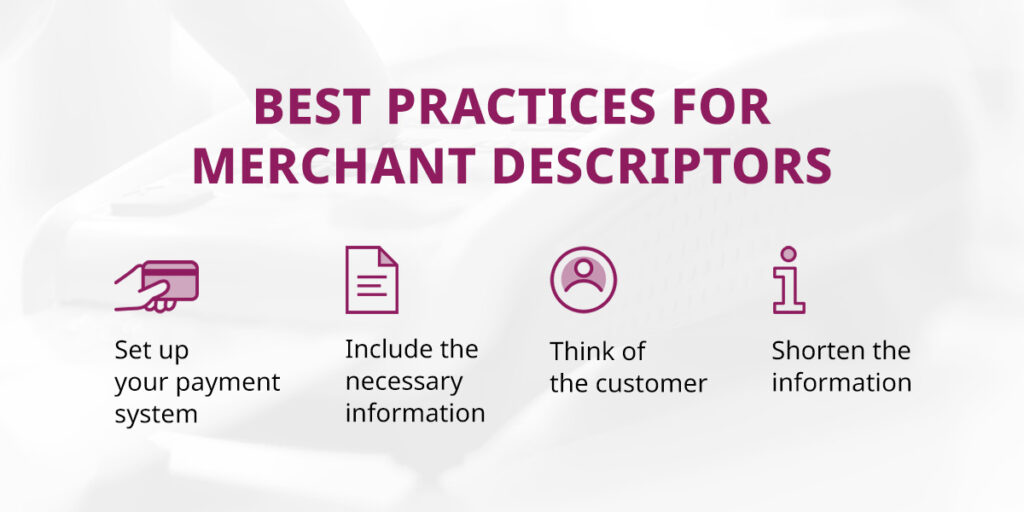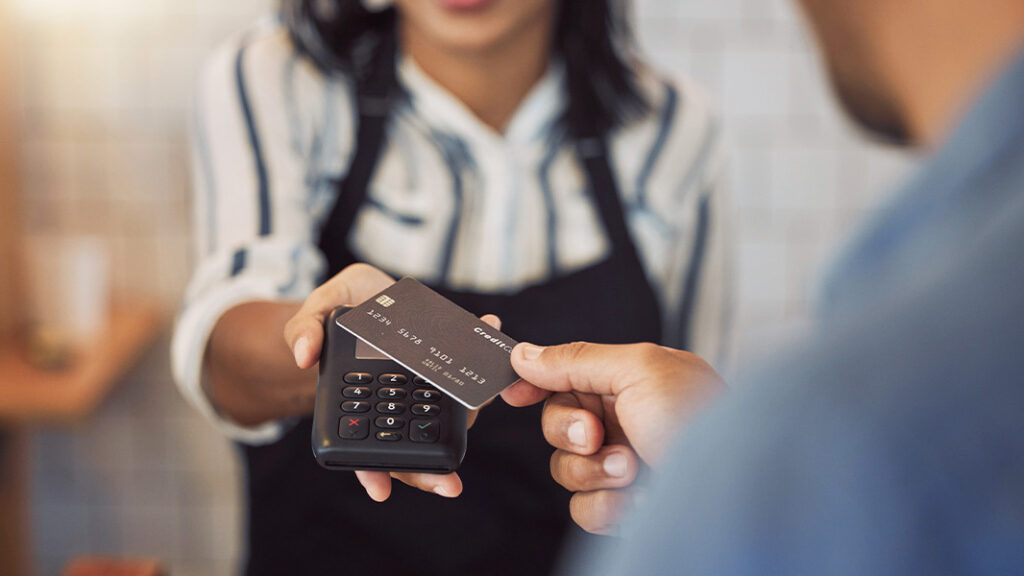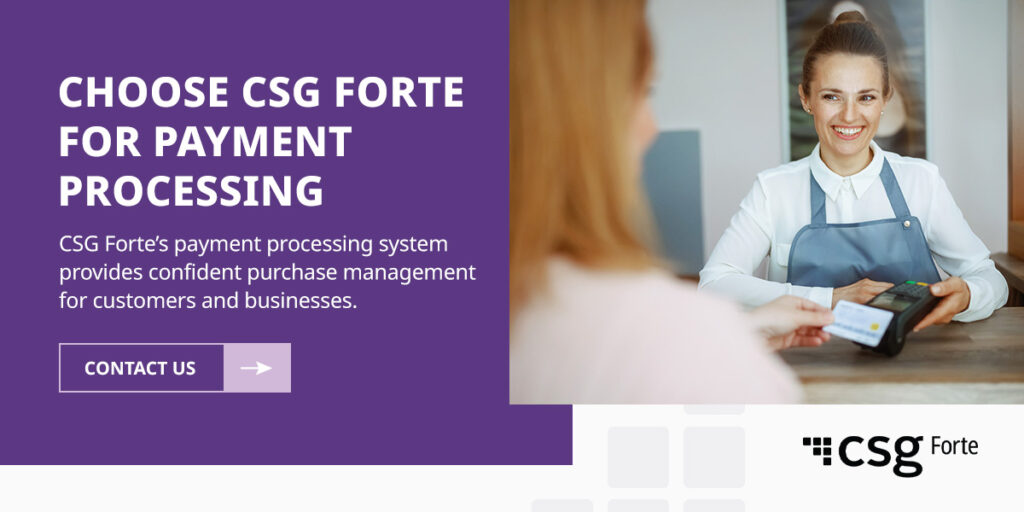Your Guide to POS Debit and POS Charges
When you accept credit or debit card payments, your business and customers need an easy way to distinguish between different types of transactions to separate the real ones from fraudulent ones. This is where merchant descriptors come in. Merchant descriptions explain various transaction types on a customer’s bank account or credit card statements.
Two common descriptors are point of sale (POS) and POS debits. Learning the difference between various descriptors will allow your business to create accurate and easy-to-understand descriptors for various transactions your customers make.
POS vs. POS Debit
Though the terms POS and POS debit may seem interchangeable, they have distinct meanings. Take a deeper look at each of these common terms:
What Is Point of Sale?
In general, POS refers to the place where the sale is consummated. A POS transaction is any transaction where a customer uses a card to purchase an item on a store’s POS system, including at a cash register or similar payment area at the front of a store. It may also include online sources. Payment methods in this category consist of several types, from debit and credit cards to gift cards.
What Does POS Debit Mean?
POS debits are a more specific category within point-of-sale transactions. A transaction appears as a POS debit in a customer’s account when the buyer uses a debit card to purchase merchandise at a cash register or other point of sale using a personal identification number (PIN).
This transaction differs from a direct benefit transfer (DBT) because DBTs don’t require a PIN entry. The DBT designation often appears for transactions such as contactless payment or e-commerce sales. When customers make purchases, the transaction posts to their account immediately, though it may process at the end of a business day or later.
Transactions with debit cards have consistently increased in popularity in the decades since this payment method’s adoption. Today, debit cards account for about 55% of non-cash transactions. Their popularity means businesses and customers need a reliable and transparent way to record debit card payments. One way is through a POS debit classification.
Debit Card vs. Credit Card Transactions
Although the physical process of paying with a debit card is quite similar to that of a credit card, these payment types have several differences that create a need for different descriptors in your system. These differences include:
1. Where the Money Comes From
With a debit card transaction, the money comes directly from a customer’s checking account. When customers pay with credit cards, the money comes from a credit card network and the customer will pay the card association back later for charges incurred.
2. The Risk Involved
The risk involved is a significant reason for the distinction between the two payment types. Credit cards charge higher fees because customers are not directly accessing money they have available in their checking accounts. Different classifications ensure that merchants pay the proper fees for each credit or debit card transaction.
3. The Card Issuer
Debit cards come from banks where customers have checking accounts. Usually, the card falls under a central issuer, like Mastercard or Visa. These larger issuers typically offer credit cards, too. Most people access credit cards through either their financial institution or directly from an issuer.
How Do Merchant Descriptions Work?
Merchant descriptors appear on bank or credit card statements to inform customers about their transactions. Customers know these descriptors as the bank statement description. There are three types of descriptors:
- Static: These descriptors never change and are also known as default or hard descriptors. Your business will likely set this descriptor once and leave it as is. Whether a customer pays with a debit card, mobile payment or credit card, they will see the same descriptor.
- Dynamic: This descriptor will change depending on the purchase method and other factors. This category includes POS debit and POS transactions. Some payment processors also allow for changes based on the type of purchase made, like those for a particular service.
- Soft: These descriptors often appear in a different portion of a customer’s bank account after a customer authorizes a transaction but before it settles. In many cases, it looks the same as the static descriptor. In some cases, it may appear under the payment service provider’s name instead of the merchant’s name, which can confuse some

Best Practices for Merchant Descriptors
Merchant descriptors inform customers about the purchases they make so they can determine whether any may be fraudulent. Customers who cannot identify a transaction’s origin from the descriptor might dispute the charges, even when they are legitimate, costing your business money. This situation is known as a chargeback or friendly fraud, and causes significant losses for businesses.
To avoid confusion, you can follow a few standard practices for displaying transactions on a bank statement:
- Set up your payment system: When you get a new payment system for the first time, establish understandable descriptors from the beginning. If you have had the same processing system for some time, go back and ensure descriptors make sense.
- Include the necessary information: Make your business easily identifiable by including a shortened name, state and ZIP code. You could also add a phone number or a URL.
- Think of the customer: You may want to set descriptors that work well for your payment processing needs. Instead, determine what would be most useful for the customer to know.
- Shorten the information: Most bank or credit card statements only display about 20 to 30 characters. Ensure you fit all necessary information in that count and test different banks or credit card companies to see how each shows your description.
Adhering to best practices is crucial for your business and customer satisfaction. Poor descriptors are a common indicator of fraudulent transactions for customers. Creating worthwhile descriptors can ensure your customers feel comfortable making purchases at your business, minimize fraud reports for your business and highlight your business as trustworthy.
Protecting Your Business With Reconciliation
Your business likely manages many transactions every day. Like your customers, you want to ensure that the amounts your POS system records match those recorded by your bank. Reconciliation empowers businesses to obtain greater consistency and higher accuracy in financial records, guiding decisions and resource allocation.
POS transactions appear in your accounts with merchant descriptors in the same way they do for customers. Here’s how you can reconcile them:
- Review sales and refunds in your POS system.
- Compare this list to bank statements to check for differences.
- Identify transactions that don’t match.
- Contact your bank to resolve any issues.
Depending on the number of transactions you handle, you might perform reconciliations as often as every day to as little as once a month.
Frequently Asked Questions
Looking for more information about POS and debit POS? Take a look at these frequently asked questions:
1. What Is the Difference Between Debit Cards and POS on Bank Statements?
There are a few aspects to note regarding bank statements. POS transactions allow customers to use various payment methods, meaning the transaction could show up in several locations, depending on the customer’s settings, card usage and similar aspects. Additionally, each transaction type appearing on a bank statement may differ, depending on the customer’s financial institution or card issuer and their policies.
2. Is POS or Debit POS Better for Businesses?
POS and debit POS both offer convenience and unique benefits. Generally, a customer using a credit card will cause a business to pay more in fees for the transaction. This reason may make debit POS more convenient for some companies. However, whether one is better for your business than the other will mostly depend on customer preference. After all, if your customers are unhappy, your business will feel the difference.
3. Can You Trace a POS Transaction?
You can trace a POS transaction. Your POS system will store information such as payment methods, sold items, sales data and prices, allowing you to report and access data when necessary. Customers can also trace purchases they made at your business by providing your receipt, ensuring you and your customers can stay up to date on financial information.
4. What Is Point of Sale Withdrawal?
A POS withdrawal refers to a unique POS debit transaction. Some merchants use this feature to allow customers to pull funds at checkout, like they would at an ATM. Many people refer to this process as “getting cash back”. Customers must input their PIN to complete their purchase and request a POS withdrawal. Locations like grocery stores and convenience stores often implement this feature.
5. What Is a POS Refund?
When a customer returns a purchased product or if a cashier corrects input errors, a POS refund occurs. POS refunds reflect the original transaction amount. Generally, it will take between seven and 10 business days for customers to receive a debit refund, but some businesses and financial institutions can process these transactions in around three days.
Choose CSG Forte for Payment Processing
Whether you handle POS transactions online or in person, CSG Forte’s payment processing system allows you to feel confident about your purchase management for both customers and businesses. Learn more about how our reliable payment solution lets you accept point-of-sale transactions and maintain logical merchant descriptors for debits and other payment types. Get even more information about our solutions when you get started today.


